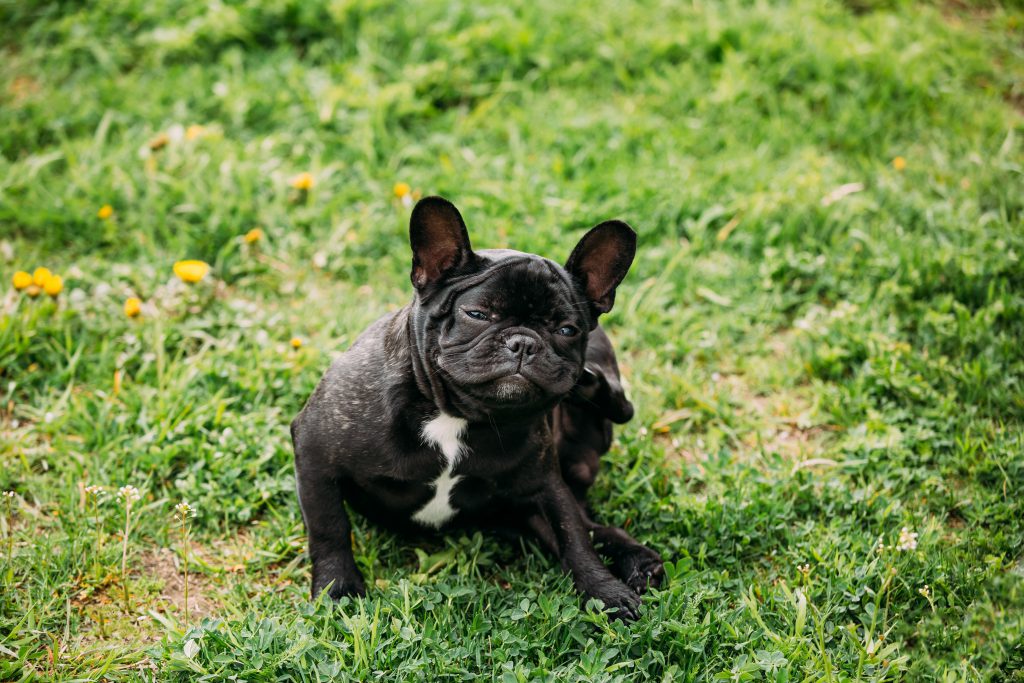When it comes to seasonal allergies, humans aren’t the only ones who get itchy eyes and a runny nose once the flowers start blooming and warm weather emerges. Our pets are just as susceptible to environmentally triggered allergies
And while our furry friends can’t necessarily tell us how they’re feeling, we can keep an eye out for triggers and systems that will tell us when our pet isn’t feeling the greatest. So, now that we’re full swing into spring, here’s how to tell if your dog has seasonal allergies – and what you can do about them.
Food vs. Seasonal
You’ve noticed your dog seems to be overly itchy. He’s sneezing often and has hives all over his body. All these symptoms point to one thing – allergies. Now the question is: are they seasonal or food-related? It’s difficult to know right off the bat – both types have similar symptoms. But more than likely it’s one or the other. In fact, “approximately 30 percent of pets with food-responsive disease also have seasonal allergies or allergies to fleas.” And with any allergy, it’s likely going to be trial and error to figure out the exact cause.
But there are some differentiators that help indicate which allergy your dog has. The first is location. “If you notice lesions all over your dog’s body, on the flanks, ribs, hips or knees there’s a big chance it’s a food allergy,” says Dr. Patrick Mahaney, a holistic veterinarian. Other common systems include reoccurring earaches, vomiting and diarrhea. For seasonal allergies, the key indicator is the time of year your pet is experiencing symptoms. Generally, these allergies occur around the same time each year. This means your dog’s symptoms will simultaneously reappear once that time comes. Climate also plays a big role. If you’re located in a hot, humid area, your dog will be exposed to more allergy triggers – likely resulting in more flare-ups.
Diagnosing the allergy
Any breed of dog can have seasonal – or food-related – allergies. However, just like humans, some are more susceptible to those allergies than others. Studies have found that terriers, setters, retrievers and flat-faced breeds such as pugs and bulldogs seem to be more vulnerable to seasonal allergies – so be aware. Diagnosing those allergies is where things can get tricky. From dust to pollen to grass or flea bites, your dog can have a reaction to nearly anything.
So how do you diagnose what your dog is reacting to? As with anything medical-related, the first step is to contact your veterinarian. Diagnosing and treating your dog’s allergies at an early stage not only increases the likelihood of your dog’s treatment being successful but can also save you time and money by avoiding additional reactions. And remember, while you may think you know what is causing your dog discomfort, it’s crucial to let a trained professional evaluate and determine the true cause.
Your veterinarian will likely do an intradermal skin test, which is similar to how doctors treat humans for allergies. An intradermal skin test is when a small number of test allergens are injected under your dog’s skin. This can help pinpoint the problem of moderate to severe allergies. As with humans, the allergen is identified by swelling, redness or even hives at the injection site. From there, your vet can create an allergy shot specifically for your dog or suggest alternative solutions.
Treating Your Dog’s Allergies
So, you’ve confirmed that your dog has seasonal allergies. But now you’re wondering what you can do to help with your pup’s discomfort in addition to your veterinarian’s instructions. No owner likes to see their dog suffer, so thankfully there are a few steps you can use to help your dog deal with his allergies.
The first is to adapt your walking routine. More than likely you and Fido have your usual loop around the neighborhood that you do on a daily basis. But believe it or not that routine could play a role in your dog’s sniffles. “If possible, avoid walking your dog in the early morning or late afternoon, when pollen levels are typically highest. Steer clear of fields and parks where offending plants are common, and consider an indoor, open-play setting like Dogtopia during the offending months.”
While it may be difficult to control what goes on outdoors, there are a few things that can be done indoors. For starters, regularly changing air filters inside your home will help cut down on airborne allergens that can enter through open doors and windows. Additionally, vacuuming at least once a week will help pick up any dust or pollen as well. Lastly, washing your pup in warm or hot water once a week will help prevent dry, itchy skin. And you can even try using hypoallergenic anti-itch shampoo to help moisturize and soothe irritation.
Conclusion
Keep in mind, allergy symptoms are commonly confused with other conditions and disorders. So, be sure to visit your dog’s veterinarian for a professional diagnosis. In the meantime, being aware of the symptoms and triggers of your pet’s seasonal allergies will make it easier to take the next step to getting treatment and providing relief to your furry friend.
